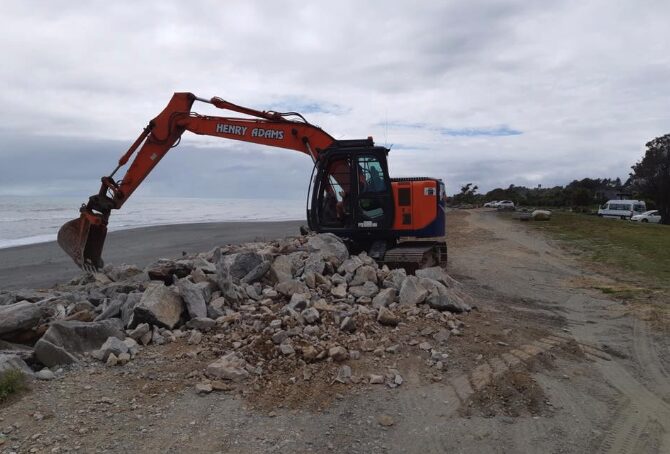The West Coast Regional Council says it is closer to its goal of long-term coastal protection with the advancement of a consent application for the Hokitika Seawall Extension Project.
The Seawall Extension Project, part of the West Coast’s IRG ‘Shovel-Ready’ programme of works, will provide a complete river-sea flood protection around the Hokitika township which the Council says is currently exposed on two sides to elevated sea and river levels from river flooding and storm surge events.
Council has lodged a Notified Resource Consent application and is currently waiting for a Hearing date to be set by the Independent Commissioner.
Council Natural Hazards Analyst, Dr Sharon Hornblow says Hokitika township’s exposure to
natural hazards is evident as the town is built within a dynamic coastal environment and
erosion issues are part of a long-term balance between sediment supply and highly active
coastal processes.
“The shoreline is in a state of ‘dynamic equilibrium’ balancing sediment supply from the
river and earthquake induced landslides, with coastal bars and erosion troughs impacted by
flood flows and storms,” she said.
“Hokitika is also located seismically between the Alpine Fault inland and the Cape Foulwind Fault offshore meaning vertical land movement, along with sea level rise, is a future consideration.”
Decades of monitoring coastal erosion data and undertaking LiDAR capture in 2021 clearly
showed the potential for river and storm surge flooding for the riverine and coastal areas in
the town, said Dr Hornblow.
“Future projections for the Hokitika shoreline are more frequent severe flood events, coastal storms, future sea level rise from measured temperature increases and ice melt, and further sediment transport as well as coastal erosion.”
“Extending and completing a new sea wall along the shorefront in Hokitika presents a proactive short- to medium-term option for Hokitika, potentially helping mitigate the ongoing impacts of sea level rise and increased coastal hazard exposure as we work towards a long-term strategy.”
Council Chair, Peter Haddock said Council did not currently have funds allocated to the new seawall, but obtaining the consents underpinned the need for greater coastal protection in vulnerable West Coast communities.
“The Regional Council is working proactively to ensure our communities on the Coast are better protected and we will be advocating for better protection solutions in the immediate future,” said Mr Haddock.



